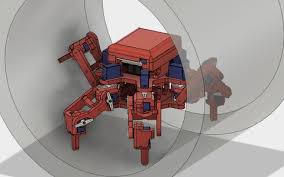
The team, based in Sheffield’s Department of Automatic Control and Systems Engineering (ACSE), uses simple Quadcopters. They have created software that enables the robot to learn about its surroundings using a forward facing camera mounted at the front of the machine.
According to the university, the robots start with no information about its environment, but then build up a 3D map of the world around them. Other sensors pick up barometric and ultrasonic data, which give the robot additional clues about its environment, says the university.
“We are used to the robots of science fiction films being able to act independently, recognise objects and individuals and make decisions,” said Professor Sandor Veres, who is leading the research. “In the real world, however, although robots can be extremely intelligent individually, their ability to co-operate and interact with each other and with humans is still very limited.
“As we develop robots for use in space or to send into nuclear environments – places where humans cannot easily go – the goal will be for them to understand their surroundings and make decisions based on that understanding.”
How do the Quadcopters work out how to ‘politely’ fly past each other without colliding? They collaborate to work out which robot should fly higher and which should fly lower, so they are able to pass.
“The learning process the robots use here is similar to when two people meet in the street and need to get round each other,” said ACSE research fellow, Dr Jonathan Aitken. “They will simultaneously go to their left or right until they coordinate and avoid collision.”
The researchers apparently used game theory to programme the quadcopters – each robot is a player and must complete its given task in order to “win” the game.
If the robots play the game repeatedly they start to learn each other’s behaviour. They can then perform their task successfully – in this case, getting past their opposite number – by using previous experience to estimate the behaviour of the other robot.
“These simple tasks are part of a major research effort in the field of robotics at Sheffield University,” says Professor Veres. “The next step is to extend the programming capability so that multiple robots can collaborate with each other, enabling fleets of machines to interact and collaborate on more complex tasks.”
httpv://youtu.be/u-j1x-QQuwo
See also: Living machines explore the Science Museum
 Electronics Weekly Electronics Design & Components Tech News
Electronics Weekly Electronics Design & Components Tech News



